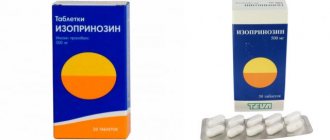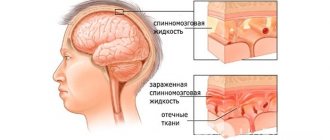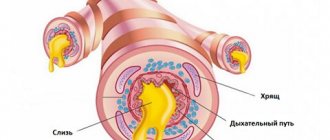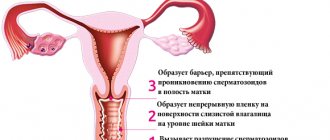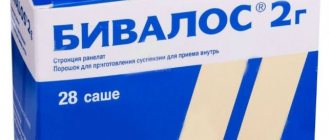Zoladex is a pharmacological drug actively used in oncology and gynecology. The drug is used in the treatment of pathologies that develop against the background of hormonal imbalance. It has proven itself in the treatment of prostate and breast cancer, endometriosis, as well as in the desensitization of the pituitary gland before IVF. The list of contraindications for the drug is quite wide, and side effects may occur during therapy. Therefore, it is advisable to use Zoladex only as prescribed by a doctor. You can buy antitumor drugs in our pharmacy.
Release form and composition
Dosage form – capsules for subcutaneous administration of prolonged action, which are cylindrical pieces of solid polymeric material, free or almost free of visible inclusions, white or cream color (in syringe applicators with a protective mechanism (Safety Glide safe injection system), 1 syringe per aluminum laminated envelopes, 1 envelope in a cardboard pack).
Active ingredient: goserelin (in the form of acetate), in 1 capsule – 3.6 or 10.8 mg.
Additional substances of 3.6 mg capsules: glacial acetic acid, glycolic and lactic acid copolymer (50:50).
Additional substances of 10.8 mg capsules: copolymer of lactic and glycolic acids, low molecular weight (95:5) and high molecular weight (95:5).
Pharmacological properties
Pharmacodynamics
With continuous use, Zoladex inhibits the release of luteinizing hormone by the pituitary gland, which leads to a decrease in the serum concentration of estradiol in women and testosterone in men. After discontinuation of the drug, this effect disappears. Initially, goserelin, like other GnRH agonists, may transiently increase serum estradiol concentrations in women and serum testosterone concentrations in men. Also, in the early stages of treatment with the drug, some women develop vaginal bleeding of varying intensity and duration.
In men, testosterone concentrations decrease to castration levels approximately 21 days after the first Zoladex capsule administration and remain reduced with continuous therapy given every 28 days (using 3.6 mg capsules) or every 3 months (using 10.8 mg capsules) . With this decrease in testosterone concentration, most patients experience prostate tumor regression and symptomatic improvement.
The concentration of estradiol when using the drug in women also decreases by approximately 21 days after administration of the first capsule of Zoladex 3.6 mg and remains reduced (at the level observed during menopause) with regular therapy every 28 days. This decrease in estradiol concentration leads to a positive effect in endometriosis, hormone-dependent forms of breast cancer, suppression of the development of follicles in the ovaries and uterine fibroids. Thinning of the endometrium occurs, and most women experience amenorrhea.
After administration of 10.8 mg capsules, the serum concentration of estradiol in women decreases within 4 weeks after administration of the first capsule of the drug and remains reduced throughout treatment. When switching to Zoladex 10.8 mg from other GnRH analogues, the suppression of estradiol concentrations persists. The therapeutic effect of reducing the level of estradiol is manifested in uterine fibroids and endometriosis.
Zoladex 3.6 mg, when used together with iron preparations, causes amenorrhea, as well as an increase in the level of hematological parameters and hemoglobin in patients with concomitant anemia and uterine fibroids.
During treatment with GnRH agonists, menopause may occur. In some women (rarely), menstruation does not return after treatment.
Pharmacokinetics
Maintaining effective drug concentrations is achieved by administering Zoladex 3.6 mg every 4 weeks and Zoladex 10.8 mg every 12 weeks. The drug does not accumulate in tissues.
Goserelin binds poorly to plasma proteins. In patients with normal renal function, the half-life of the drug from serum is 2-4 hours (in case of impaired renal function, this figure increases). With monthly administration of 3.6 mg or 10.8 mg capsules, this change does not have significant consequences, so no dose adjustment is required in patients with impaired renal function.
In case of liver dysfunction, the pharmacokinetics of the drug changes slightly.
Contraindications to treatment
An absolute contraindication to Zoladex therapy is individual intolerance to goserelin or auxiliary components. Treatment is carried out under strict medical supervision if patients have the following pathological conditions:
- ureteral obstruction;
- likelihood of compression of the spinal canal;
- polyendocrine syndrome accompanied by ovarian dysfunction.
Zoladex is not used in childhood and adolescence. The list of absolute contraindications also includes periods of childbearing and breastfeeding.
Instructions for use of Zoladex: method and dosage
Capsules 3.6 mg
Zoladex is injected subcutaneously into the anterior abdominal wall, 1 pc. every 28 days.
For malignant neoplasms, the drug is used for a long time. For benign gynecological diseases, therapy lasts up to 6 months (there is no data on the safety and effectiveness of longer treatment).
To thin the endometrium during planned operations, Zoladex is administered 2 times with a 4-week interval. Ablation of the uterus is performed in the first 2 weeks after the second dose.
In IVF, Zoladex is used to desensitize the pituitary gland, which is determined by the level of estradiol in the blood serum. As a rule, the required concentration of estradiol, which corresponds to that in the early follicular phase of the cycle (about 150 pmol/l), is achieved between 7 and 21 days. After the onset of desensitization, stimulation of superovulation begins with the help of gonadotropin. The resulting desensitization of the pituitary gland when using Zoladex may be more persistent, as a result of which the need for gonadotropin may increase. Its administration is stopped at the appropriate stage of follicle development, then human chorionic gonadotropin (hCG) is administered to induce ovulation.
Capsules 10.8 mg
Zoladex is injected subcutaneously into the anterior abdominal wall:
- Men: every 3 months;
- Women: every 12 weeks.
Analogues substitutes
Among them, the last drug is especially common.
The group of antitumor hormone antagonists includes many drugs. These are Goserelin and Zoladex, Buserelin and Triptorelin, as well as many others. Therefore, the patient is faced with the question of what to choose? Zoladex or Buserelin? Diferelin or Zoladex? Decapeptyl or Zoladex?
The answer to these questions is simple and banal: you don’t need to choose anything yourself! Of course, the manufacturer Zoladex tried to make its medicine as effective as possible, but since people are all different, it is impossible to say in advance how it will affect the patient. Only a doctor can analyze reviews of Zoladex 3.6 mg or other medications and, based on them, draw conclusions about the advisability of prescribing.
Buserelin
Pharm-sintez, JSC, Russia
The average cost of the product is 2660 rubles per package.
The use of the drug is suitable for progressive endometriosis and any other diseases provoked by an increased amount of estrogen in a woman’s body, when other methods of reducing it have not helped (therapy with anti-estrogens and testosterone). Buserelin is available in the form of a spray and solution. The drug acts in such a way that after it enters the body, a strong antigonadtropic effect occurs - the pituitary gland stops releasing gonadotropins - follicle-stimulating hormone and luteotropin, which is why the woman goes into artificial menopause. She experiences hot flashes, thinning bone tissue, excess weight and vaginal dryness.
- Helps for a total restructuring of hormonal levels
- Will help you get pregnant.
Side effects
- Immune system: uncommon – hypersensitivity reactions; in rare cases - anaphylactic reactions;
- Metabolic disorders: often - decreased glucose tolerance (in men); uncommon – hypercalcemia (in women);
- Endocrine system: very rarely - hemorrhage into the pituitary gland;
- Cardiovascular system: very often – hot flashes; often – heart failure and myocardial infarction (in men), hypertension or hypotension;
- Nervous system and psyche: very often – decreased libido; often – depression and headache (in women), spinal cord compression (in men), decreased mood, paresthesia; very rarely - psychotic disorders;
- Musculoskeletal system: often – bone pain (in men), arthralgia (in women); infrequently – arthralgia (in men);
- Genitourinary system: very often - an increase in the size of the mammary glands and dryness of the vaginal mucosa (in women), erectile dysfunction (in men); often – gynecomastia (in men); infrequently – obstruction of the ureters and soreness of the mammary glands (in men); in rare cases - ovarian cyst (in women), ovarian hyperstimulation syndrome (in women who are prescribed Zoladex simultaneously with gonadotropins); frequency unknown – vaginal bleeding (in women);
- Skin and subcutaneous tissue: very often – increased sweating; often – alopecia (in women), rash; frequency unknown – alopecia (in men);
- Neoplasms: very rarely - pituitary tumor; frequency unknown - degeneration of fibromatous nodes in women with uterine fibroids;
- Other: very often - reactions at the injection site of the capsule (in women); often - a temporary increase in symptoms of the disease at the beginning of treatment for women with breast cancer, reactions at the injection site (in men);
- Laboratory tests: often - increase in body weight, decrease in bone mineral density.
special instructions
The resumption of the menstrual cycle after the end of treatment may be delayed in some women. Until menstruation returns, women undergoing treatment with Zoladex should use non-hormonal methods of contraception. In rare cases, menopause may occur without the restoration of menstruation after discontinuation of the drug.
When using goserelin in combination with gonadotropin, the development of ovarian hyperstimulation syndrome (OHSS) is possible. For this reason, it is necessary to carefully monitor the process of cycle stimulation in order to promptly identify the risk of developing OHSS. If necessary, the administration of hCG should be stopped.
According to the instructions, Zoladex can lead to an increase in cervical resistance, and therefore care must be taken when dilating the cervix.
When carrying out IVF, the drug should be used only in a specialized medical institution under the supervision of a doctor with experience in this field.
GnRH analogues may cause a decrease in bone mineral density. The loss of bone mineral density and the manifestation of vasomotor symptoms in women receiving Zoladex for the treatment of endometriosis can be reduced by simultaneous hormone replacement therapy with daily use of estrogen and progestogen drugs. In men, the loss of bone mineral density, according to preliminary data, is reduced by simultaneous use of a bisphosphonate.
Because GnRH agonists may decrease glucose tolerance in men, it is recommended that they regularly monitor their blood glucose concentrations.
There have been no reports of a negative effect of Zoladex on the speed of reactions and the ability to concentrate.
Bottom line
Zoladex is an effective antitumor hormonal drug produced in the UK. The product has no structural analogues, as it contains a unique medicinal formula. The medicine is prescribed for the treatment of neoplasms of the genital organs of men and women - prostate and breast cancer. Zoladex is also used to suppress the functionality of the ovaries as part of the IVF protocol and other artificial insemination techniques.
Side effects during the course of therapy are eliminated with symptomatic treatment. At the end of taking the drug, pathological symptoms do not require treatment, as they go away on their own. If the menstrual cycle has not been restored, special restorative therapy is used.
The drug Zoladex is an expensive imported drug that can be replaced with less expensive medications of similar action. However, it is forbidden to search for a replacement on your own - the doctor must select an analogue based on the medical history and condition of the patient.
